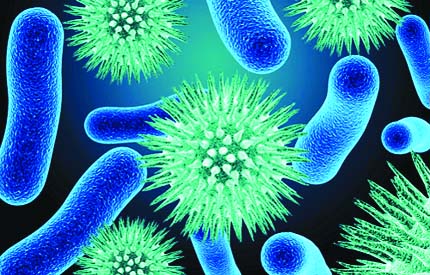
UNB, Dhaka :
More than half of the rivers in Asia, Africa and Latin America have become more dangerous due to steep rises in organic and pathogen pollution over the last 20 years.
According to a recent UN study, more than 300 million people on the three continents are at risk from waterborne diseases. And over the same time span, according to a separate study, at least 10 percent of the area considered as wilderness has been destroyed or damaged by humans, according to a message received here from Climate News Network. Human destruction of wilderness areas has added to the pathogenic pollution that puts millions of people on three continents at risk. The anthropogenic factor is also influencing the organic ways of pollution as rivers tend to have their source in uninhabited terrain, and wilderness areas are the least likely to carry human infection such as typhoid or cholera, or to become poisoned by human toxic or organic waste.
The latest UN Environment Programme report on water quality argued that the ‘worrying’ rise in pollution is a threat to vital food sources and to the economic wellbeing of the three continents.
By making access to clean, safe water even more difficult, it has increased
global inequality – hitting women, children and the poorest hardest of all. “Access to quality water is essential for human health and human development, and both are at risk if we fail to stop this pollution,” says Jacqueline McGlade, UNEP chief scientist. “Luckily, it is possible to begin restoring rivers from becoming contaminated. It is vital the world works together to combat this growing menace.” Around 3.4 million people die each year from water-borne diseases such as cholera, typhoid, infectious hepatitis, polio, cryptosporidiosis and other infections, and many of these diseases are linked to human excrement in water.
In Latin America, 25 million people could be at risk; in Africa, 164 million; and in Asia, 134 million. One of every seven kilometres of all river stretches in the three continents is now affected by severe organic pollution.
Saline wastewater from mines, irrigation systems and homes already affects a tenth of all river stretches and makes it even harder for the poorest farmers to irrigate their crops. Between 1990 and 2010, this increased in almost a third of all rivers on the three continents. More than half of the phosphorus load in 23 out of 25 of the world’s major lakes was delivered by humans from fertilisers, pesticides, livestock waste and human sewage.
More than half of the rivers in Asia, Africa and Latin America have become more dangerous due to steep rises in organic and pathogen pollution over the last 20 years.
According to a recent UN study, more than 300 million people on the three continents are at risk from waterborne diseases. And over the same time span, according to a separate study, at least 10 percent of the area considered as wilderness has been destroyed or damaged by humans, according to a message received here from Climate News Network. Human destruction of wilderness areas has added to the pathogenic pollution that puts millions of people on three continents at risk. The anthropogenic factor is also influencing the organic ways of pollution as rivers tend to have their source in uninhabited terrain, and wilderness areas are the least likely to carry human infection such as typhoid or cholera, or to become poisoned by human toxic or organic waste.
The latest UN Environment Programme report on water quality argued that the ‘worrying’ rise in pollution is a threat to vital food sources and to the economic wellbeing of the three continents.
By making access to clean, safe water even more difficult, it has increased
global inequality – hitting women, children and the poorest hardest of all. “Access to quality water is essential for human health and human development, and both are at risk if we fail to stop this pollution,” says Jacqueline McGlade, UNEP chief scientist. “Luckily, it is possible to begin restoring rivers from becoming contaminated. It is vital the world works together to combat this growing menace.” Around 3.4 million people die each year from water-borne diseases such as cholera, typhoid, infectious hepatitis, polio, cryptosporidiosis and other infections, and many of these diseases are linked to human excrement in water.
In Latin America, 25 million people could be at risk; in Africa, 164 million; and in Asia, 134 million. One of every seven kilometres of all river stretches in the three continents is now affected by severe organic pollution.
Saline wastewater from mines, irrigation systems and homes already affects a tenth of all river stretches and makes it even harder for the poorest farmers to irrigate their crops. Between 1990 and 2010, this increased in almost a third of all rivers on the three continents. More than half of the phosphorus load in 23 out of 25 of the world’s major lakes was delivered by humans from fertilisers, pesticides, livestock waste and human sewage.

